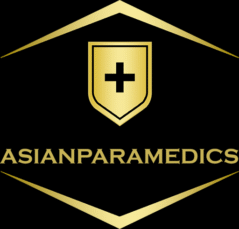This set of 45 multiple-choice questions (MCQs) is designed to help medical professionals and students prepare for the DHA (Dubai Health Authority) exam, specifically focusing on clinical chemistry. The questions cover essential topics such as glucose metabolism, diagnostic criteria for diabetes, test interference, and common analytical methods. This resource is ideal for individuals looking to strengthen their knowledge in clinical laboratory practices and ensure readiness for certification exams in the healthcare field.
- Hypoglycemia comes about for various reasons and clinical symptoms usually occur at blood glucose concentrations:
- A. <3.8mmol/L
- B. <3.0mmol/L
- C. <2.8mmol/L ✅
- D. <5.0mmol/L
- The healthy organism maintains the extracellular glucose concentration remarkably constant within the limits of:
- A. 5-12mmol/L
- B. 3.3–10mmol/L ✅
- C. 2.8–3.8mmol/L
- D. 1.2–2.4mmol/L
- Which classification of diabetes mellitus is genetically predetermined, HLA-associated, chronic autoimmune disease with insulin deficiency and glucagon excess as its pathophysiologic sequelae?
- A. Type I ✅
- B. Obese type II
- C. Non-obese type II
- D. MODY-maturity onset diabetes of the young
- According to the WHO criteria, patients with type I diabetes mellitus are, at the time of diagnosis, characterized by:
- A. Only 1 and 3 are correct
- B. Only 2 and 4 are correct
- C. Only 1, 2, and 3 are correct ✅
- D. 1, 2, 3, and 4 are correct
- In diabetic patients, this provides information about the average blood glucose concentration during the preceding 6–8 weeks:
- A. HbA1c ✅
- B. HbF
- C. HbB
- D. HbS
- This term describes the disturbed insulin effect on cells such as adipocytes, skeletal muscle cells, and hepatocytes. In simplified terms, glucose uptake by these insulin-dependent cells is reduced. As compensation, a rise in insulin secretion with hyperinsulinemia ensues:
- A. Progressive hyperglycemia
- B. Impaired glucose tolerance
- C. Insulin resistance ✅
- D. Glucose-mediated insulin secretion
- Diabetes mellitus secondary to certain and other diseases and disorders may involve the following organs:
- A. Only 1 and 3 are correct
- B. Only 2 and 4 are correct
- C. Only 1, 2, and 3 are correct
- D. 1, 2, 3, and 4 are correct ✅
- In the case of gestational diabetes mellitus, a normal diurnal glucose profile performed on the 3rd to 4th postpartum day rules out persistent diabetes mellitus. In women with macrosomic children, the diurnal glucose profile does not become valuable as an indicator until how many weeks after delivery?
- A. 3 weeks
- B. 6 weeks ✅
- C. 9 weeks
- D. 12 weeks
- The determination of glucose tolerance following the oral administration of glucose is recommended as a screening test for the presence of underlying gestational diabetes mellitus. How much gram of glucose is recommended in this tolerance test?
- A. 50 grams
- B. 75 grams ✅
- C. 100 grams
- D. 120 grams
- Which of the following statements is true in screening tests for diabetes mellitus?
- A. The European Association for the Study of Diabetes recommends to perform the Oral glucose tolerance test using 75g of glucose with 3 capillary blood collections ✅
- B. The European Association for the Study of Diabetes recommends to perform the Oral glucose tolerance test using 100g of glucose with 4 capillary blood collections
- C. In the USA the oral glucose tolerance test is performed using 100g of glucose with 3 venipunctures
- D. In the USA the oral glucose tolerance test is performed using 75g of glucose with 4 venipunctures
- Which chromosome number is associated with non-HLA genes type 1 diabetes mellitus?
- A. 9
- B. 11 ✅
- C. 15
- D. 17
- Which of the following clinical laboratory tests are used for detecting the risk of complications in newborns born to mothers with gestational diabetes or type 1 diabetes mellitus?
- A. Only 1 and 3 are correct
- B. Only 2 and 4 are correct
- C. Only 1, 2, and 3 are correct ✅
- D. 1, 2, 3, and 4 are correct
- Which of the following glucose concentrations denote plasma insulin concentration as almost zero?
- A. 20 mg/dL ✅
- B. 40 mg/dL
- C. 60 mg/dL
- D. 80 mg/dL
- What enzyme catalyzes the oxidation of glucose into gluconic acid and H2O2?
- A. Glucose oxidase ✅
- B. Glucose dehydrogenase
- C. Glucose hexokinase
- D. Mutarotase
- What enzyme catalyzes the oxidation of glucose to glucolactone?
- A. Glucose oxidase
- B. Glucose dehydrogenase ✅
- C. Glucose hexokinase
- D. Mutarotase

